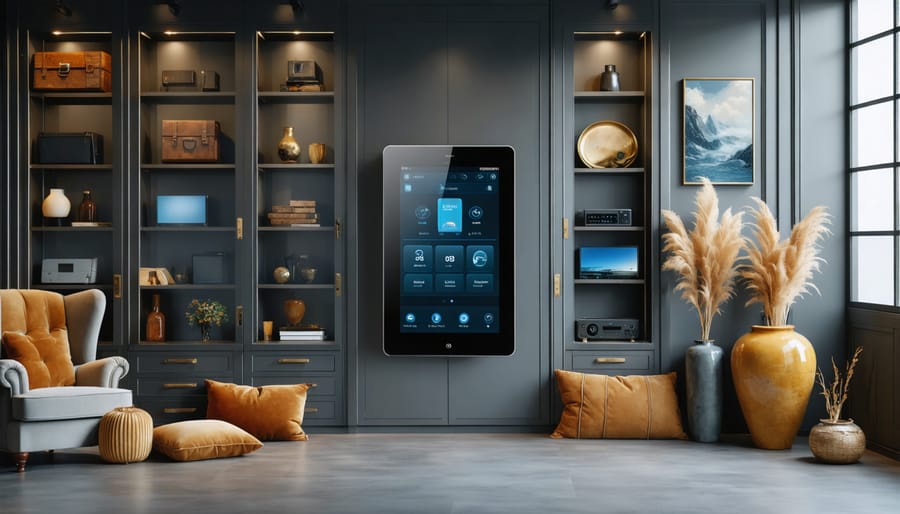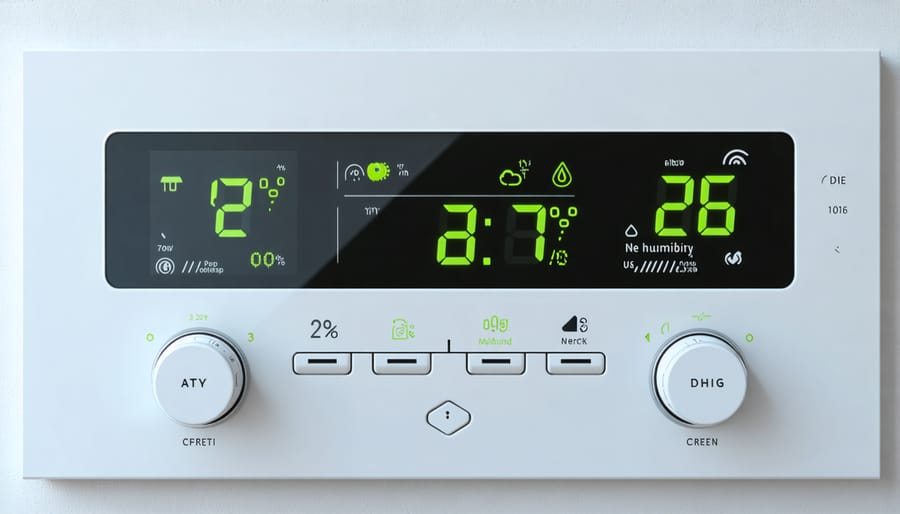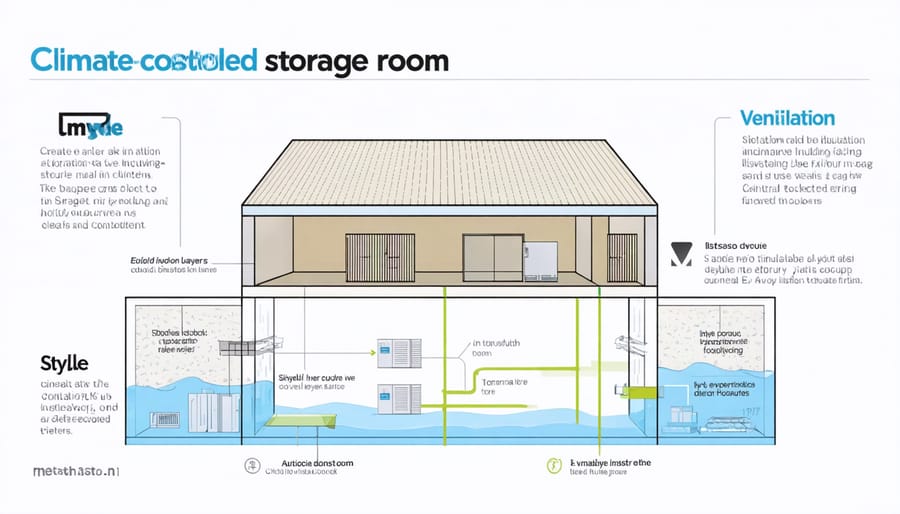Climate-Smart Storage: How Indoor Temperature Control Protects Your Valuables

Climate-controlled indoor storage transforms vulnerable spaces into protective environments that protect your belongings in any weather. Unlike basic storage units, these specialized facilities maintain consistent temperature and humidity levels year-round, safeguarding everything from cherished family heirlooms to temperature-sensitive electronics. Advanced HVAC systems and moisture control technology work continuously to prevent the damaging effects of extreme temperatures, mold growth, and humidity fluctuations that typically threaten stored items. Whether storing valuable artwork, vintage furniture, or business inventory, climate-controlled storage provides the optimal environment to preserve condition and value. Modern facilities combine this protective technology with enhanced security features, creating a comprehensive solution for both short-term and long-term storage needs. The investment in climate control often proves invaluable when compared to the potential cost of replacing damaged items stored in standard units.
Why Temperature Fluctuations Threaten Your Stored Items
Common Storage Casualties
Without proper climate control, many valuable items can suffer significant damage. Delicate wooden furniture often warps and cracks when exposed to humidity fluctuations, while expensive leather items like jackets and outdoor furniture storage cushions can develop mold and mildew. Electronics are particularly vulnerable, with computers, TVs, and gaming consoles falling victim to moisture-related damage. Family photographs and important documents frequently yellow and deteriorate in uncontrolled environments, while musical instruments can become detuned or even structurally compromised. Clothing items often develop musty odors, and delicate fabrics may become permanently damaged. Art supplies, including paints and canvases, can be ruined by temperature extremes, while wine collections risk spoilage without consistent temperature maintenance. Even seemingly sturdy items like books can develop warped pages and damaged spines when stored in spaces with poor climate control.

The Hidden Cost of Improper Storage
Improper storage can lead to significant financial losses that many homeowners don’t anticipate until it’s too late. When valuable items are exposed to fluctuating temperatures and humidity, the damage can be devastating. Family heirlooms, important documents, and expensive furniture often require costly restoration or complete replacement. A leather sofa stored in a damp environment could develop mold, potentially leading to thousands in replacement costs. Electronic equipment can suffer internal damage from temperature swings, while precious photographs and artwork may become warped or discolored beyond repair. Consider this: replacing a water-damaged mattress set could cost upwards of $1,000, while restoring mold-damaged furniture might run several hundred dollars per piece. By investing in climate-controlled storage upfront, you’re actually protecting your wallet from these unexpected expenses while preserving the value of your cherished possessions.
Essential Features of Climate-Controlled Storage

Temperature Regulation Systems
A well-designed climate-controlled storage space relies on two main components: heating and cooling systems working in harmony to maintain consistent temperatures. The heart of these systems typically includes an HVAC unit similar to what you’d find in homes, but specifically calibrated for storage needs.
For cooling, most facilities use energy-efficient air conditioning systems that can handle continuous operation. These units work alongside dehumidifiers to prevent moisture buildup, which is essential for protecting sensitive items. The cooling system typically maintains temperatures between 55-85°F (13-29°C), depending on what’s being stored.
Heating elements are equally important, especially in colder climates. Electric heating systems or heat pumps provide consistent warmth during winter months, preventing freezing temperatures that could damage electronics, musical instruments, or liquid items. Many modern systems use programmable thermostats that automatically adjust temperatures throughout the day, optimizing energy usage while maintaining ideal conditions.
The key to effective temperature regulation is proper insulation and air circulation. Strategically placed vents and fans ensure even distribution of heated or cooled air throughout the storage space, eliminating hot or cold spots that could affect stored items.
Humidity Management
Maintaining proper humidity levels is crucial in climate-controlled storage to protect your belongings from moisture damage. The ideal relative humidity range falls between 45% and 55%, striking a perfect balance between too dry and too damp conditions. Too much moisture can lead to mold growth and rust, while extremely dry conditions can cause wood to crack and paper to become brittle.
Modern climate-controlled storage facilities use sophisticated dehumidification systems that work alongside temperature control units. These systems continuously monitor and adjust humidity levels throughout the day. During humid summer months, the dehumidifiers work harder to remove excess moisture, while in winter, some facilities may actually add humidity to prevent items from drying out.
To maximize humidity control in your storage space, avoid storing wet items, use moisture-absorbing products like silica gel packets for sensitive items, and keep items slightly elevated off the floor. Regular monitoring with a simple humidity meter can help you spot potential issues before they cause damage to your valuable possessions.
Setting Up Your Climate-Controlled Storage Space
Insulation Requirements
Proper insulation is the foundation of any effective climate-controlled storage space. Start with high-quality wall insulation using either fiberglass batts or spray foam, ensuring an R-value of at least R-13 for walls and R-30 for ceilings. Spray foam offers superior protection against moisture and air leaks, though it’s typically more expensive than traditional fiberglass options.
Don’t overlook the importance of sealing gaps around doors, windows, and utility penetrations. Weather stripping and door sweeps prevent unwanted air exchange, while caulk effectively seals smaller gaps and cracks. For concrete floors, consider installing a vapor barrier and rigid foam insulation before laying the final flooring material.
Remember to insulate any exposed ductwork and pipes to maintain consistent temperatures throughout the space. Double-pane windows with low-E coating help regulate temperature and protect stored items from UV damage. For optimal results, install a moisture barrier in the walls and ceiling to prevent condensation from compromising your insulation’s effectiveness.
Finally, ensure proper ventilation is maintained even with all this insulation – good airflow prevents moisture buildup while maintaining stable temperature levels.

Ventilation Considerations
Proper ventilation is crucial for maintaining a healthy climate-controlled storage environment. A well-designed ventilation system helps prevent moisture buildup, reduces odors, and maintains consistent air quality throughout your storage space. Install exhaust fans near the ceiling to remove warm, humid air, and place intake vents near the floor to promote natural air circulation. Consider using dehumidifiers in conjunction with your ventilation system, especially in basement storage areas where moisture tends to accumulate.
Make sure air can flow freely around stored items by leaving space between boxes and walls, and avoid stacking items directly against vents. For larger storage areas, multiple fans strategically placed throughout the space can help eliminate stagnant air pockets. Regular maintenance of your ventilation system, including cleaning vents and replacing filters, ensures optimal performance and helps protect your stored belongings from moisture-related damage.
Monitoring Systems
Modern smart monitoring systems make it easy to keep track of your storage environment from anywhere. Wi-Fi-enabled sensors can send real-time temperature and humidity readings directly to your smartphone, allowing you to spot potential issues before they damage your belongings. Many systems offer customizable alerts when conditions fall outside your preset ranges, giving you peace of mind even when you’re away.
Popular monitoring options include basic thermometer-hygrometer combinations that display current readings, wireless sensors that log data over time, and comprehensive systems that integrate with your home automation setup. Some advanced models even feature remote control capabilities for connected dehumidifiers or heating/cooling units.
For most homeowners, a mid-range wireless monitor with smartphone connectivity provides the perfect balance of functionality and convenience. Look for devices with backup batteries and local storage to ensure continuous monitoring even during power or internet outages.
Climate-controlled indoor storage offers invaluable protection for your cherished belongings, making it a smart investment for anyone serious about preserving their valuables. By maintaining consistent temperature and humidity levels, these specialized storage solutions shield your items from the damaging effects of environmental fluctuations, ensuring they remain in pristine condition for years to come.
Whether you’re storing family heirlooms, important documents, antique furniture, or sensitive electronics, climate-controlled storage provides the optimal environment for long-term preservation. The controlled atmosphere prevents common issues like mold growth, warping, rust, and deterioration that often occur in standard storage spaces.
For best results, we recommend carefully assessing your storage needs and choosing a solution that offers both temperature and humidity control. Consider the size of your space, the types of items you’ll be storing, and your local climate conditions when making your decision. Remember to properly pack and organize your items, using appropriate storage containers and maintaining adequate air circulation within the space.
By investing in climate-controlled indoor storage, you’re not just storing your belongings – you’re protecting their value and extending their lifespan for future generations to enjoy.

